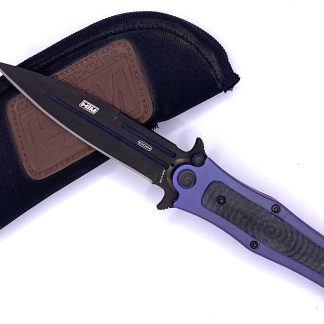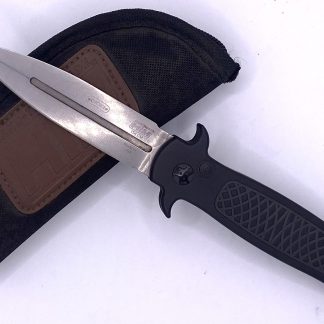There are various types of knife steel, each with its own properties and characteristics that make it suitable for different purposes. The choice of knife steel depends on factors such as hardness, corrosion resistance, edge retention, and ease of sharpening. Here are some common types of knife steel:
- Stainless Steel:
- 440 Stainless Steel: Common in budget knives.
- AUS-8/AUS-10: Japanese stainless steel with good balance.
- VG-10: High-quality stainless steel often used in Japanese knives.
- Tool Steel:
- O1 Steel: Known for its toughness and wear resistance.
- D2 Steel: Offers excellent wear resistance but can be more difficult to sharpen.
- M2 Steel: High-speed tool steel with great edge retention.
- High Carbon Steel:
- 1095 Steel: A simple carbon steel with good toughness and edge retention.
- 52100 Steel: Used in high-end, hand-forged knives with excellent wear resistance.
- Damascus Steel:
- Damascus: Not a specific type of steel but a forging technique involving layering different steels for a distinctive pattern. Damascus knives often combine high and low carbon steels for a balance of properties.
- Powdered Steel:
- CPM-S30V, CPM-S35VN: Powder metallurgy stainless steels known for excellent edge retention and corrosion resistance.
- CPM-154: A premium powdered steel with a good balance of edge retention and toughness.
- Super Steels:
- M390, CTS-204P, CPM-20CV: Part of a group of high-performance stainless steels with exceptional edge retention and corrosion resistance.
- Ceramic Blades:
- Zirconium Oxide (Zirconia): Not a metal, but ceramic knives are known for being very sharp and resistant to corrosion.
- H1 Steel:
- Known for its corrosion resistance, often used in diving knives due to its ability to withstand saltwater.
- N690 Steel:
- A high-quality stainless steel with a good balance of corrosion resistance and edge retention.
It’s important to note that the heat treatment and manufacturing processes also play a significant role in determining a knife’s performance, regardless of the steel type. The best steel for a knife depends on the intended use and personal preferences of the user.

